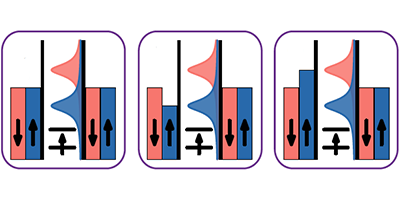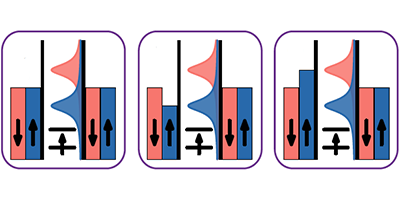Probing Kondo Physics with a Light Touch
In the Kondo effect, itinerant electrons with a degenerate degree of freedom—usually a spin degree of freedom—screen a localized charge that shares the same degeneracy. At low temperatures, the Kondo effect is seen as a conductance peak at zero voltage bias. The usual way to make spin-resolved transport measurements to study the Kondo physics involves splitting the peak with a magnetic field into positive- and negative-bias peaks. This approach, however, has the drawback of affecting the physics that one wishes to study because it breaks the spin degeneracy essential for the Kondo effect. Now, writing in Physical Review Letters, Sami Amasha of Stanford University, California, and collaborators, present a new way of studying Kondo physics without disturbing it.
The basis of the authors’ method is the use of an orbital degeneracy instead of a spin one. This degeneracy occurs in a nanoscale quantum dot, when the energy for an electron to be in either of the two dots is the same. It causes the orbital states to act as “pseudospins”: states that mimic the spin degree of freedom and have the same energy as that of itinerant electrons in the surrounding metal. The pseudospin degeneracy contributes to the Kondo screening. By measuring each dot individually, the authors can characterize the pseudospins—hence investigate Kondo physics—without affecting the orbital degeneracy. Beyond a new way to study Kondo physics, the double-dot Kondo effect has been proposed as a means of generating spin currents for spintronic applications. – Daniel Ucko





